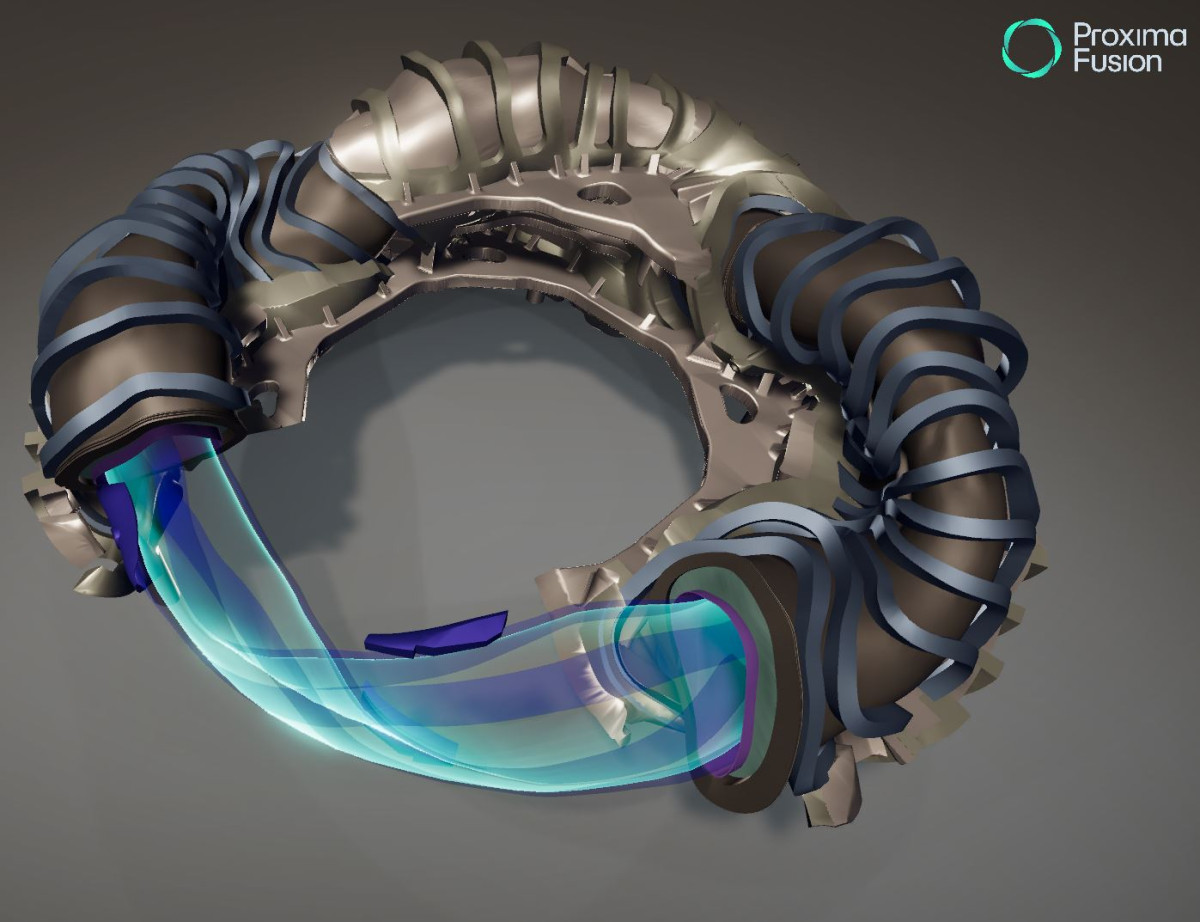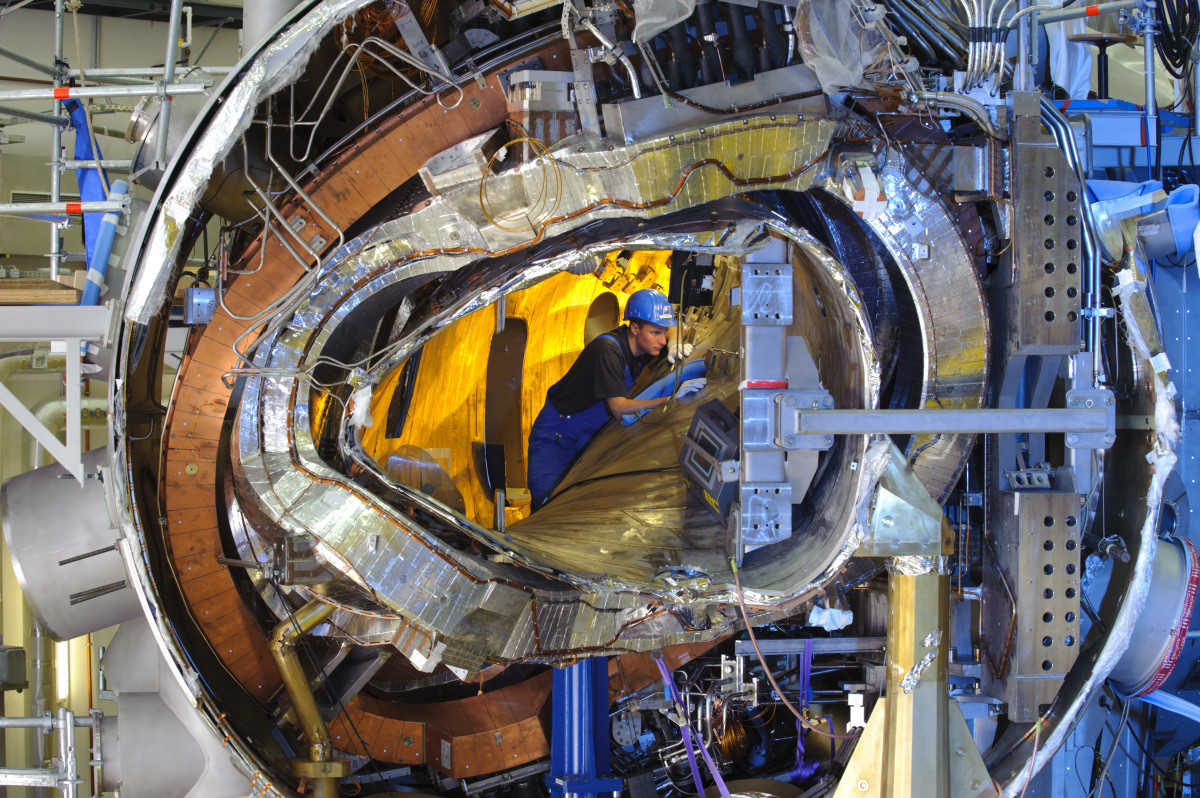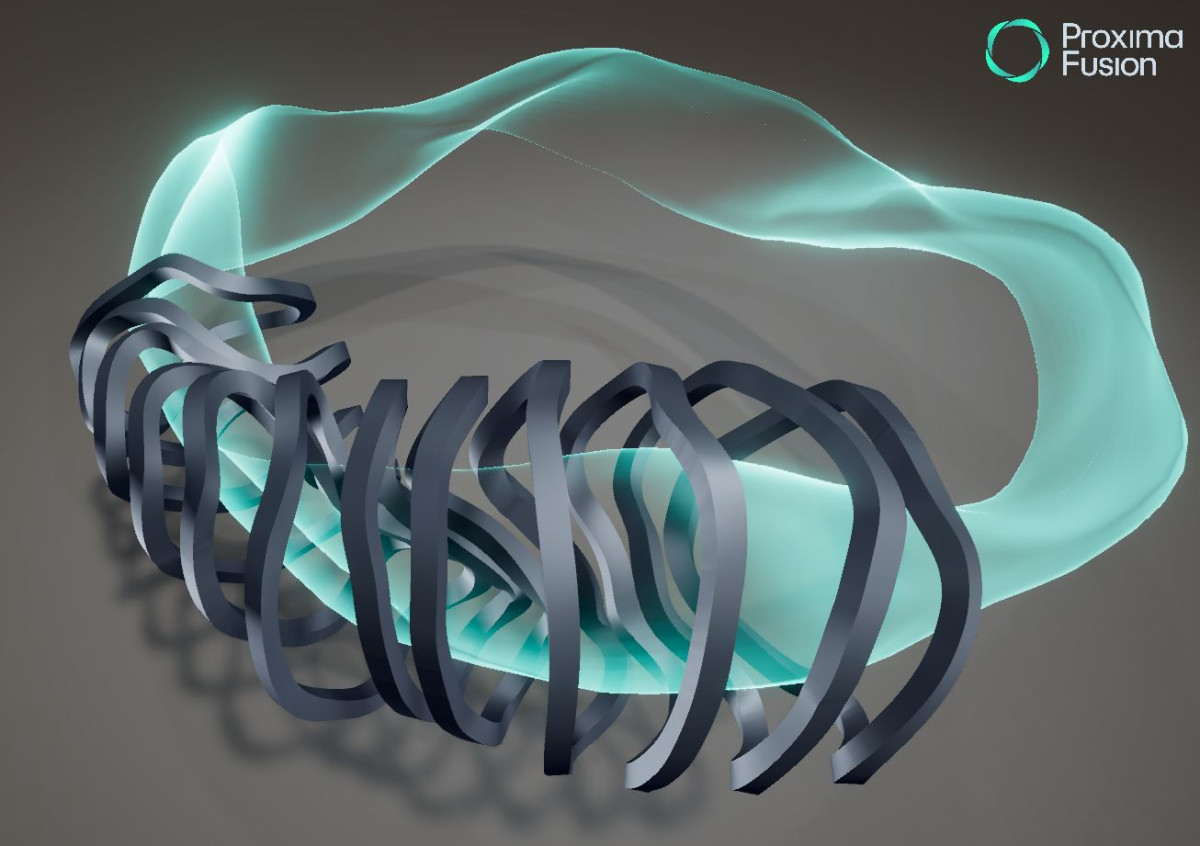Investors bet record €130mln on German fusion startup Proxima
Munich startup Proxima Fusion has concluded the “largest private fusion investment round in Europe” of 130 million euros, bringing its total private and public funding to more than 185 million euros.
“Fusion has become a real, strategic opportunity to shift global energy dependence from natural resources to technological leadership,” said Proxima Fusion co-founder and CEO, Francesco Sciortino. He said his company, a spin-out from Germany’s public Max Planck research network, wanted to accelerate the path toward “bringing the first European fusion power plant online in the next decade”.
Proxima was founded only around two years ago and continues to work closely in a public-private partnership with the Max Planck Institute for Plasma Physics. The institute also runs the ground-breaking fusion research plant Wendelstein 7-X, which recently set a world record in a key performance indicator.
Nuclear fusion research aims to mimic the process powering the Sun and other stars: fusing light atomic nuclei to release huge amounts of energy. This approach is much safer and produces less dangerous nuclear waste than conventional (fission) nuclear power plants, which work by splitting heavy atoms. [find more Background on fusion in our Q&A: Nuclear fusion: Hype or hope for a cooler planet?]
Germany phased out conventional nuclear power plants two years ago as part of its energy transition, which places solar and wind energy at the centre of the energy system. While calls for a re-activation of decommissioned nuclear power plants have largely died down following the country’s elections earlier this year, the parties forming the new government have agreed more support for nuclear fusion research, with the goal of building “the world’s first fusion reactor” in Germany.
Most fusion companies that have raised over 100 million US dollars from investors are based in the United States. Commonwealth Fusion Systems, for example, raised 1.8 billion dollars in 2021. But several fusion startups have told Clean Energy Wire that the US government’s recent attack on science is a huge opportunity for Europe, because many leading fusion researchers want to leave the US.
Growing optimism
Many researchers hope that nuclear fusion will one day provide limitless, safe, and climate-friendly energy, which is why countries such as Germany, the US, China, Japan and the UK, as well as the European Union, are investing billions of euros in developing it. In addition, dozens of startups backed by private capital have entered the fray and injected a new dynamism by achieving research milestones, such as an energy gain.
“The EU, as well as national governments including Germany, UK, France and Italy, increasingly recognise fusion as a generating technology essential for energy sovereignty, industrial competitiveness, and carbon-neutral economic growth,” Proxima Fusion said.
The fusion industry is careful to stress that growing optimism about the prospects of the technology must not become an excuse for delaying the rollout of renewables. Even though Proxima’s stated aim is to “deliver limitless, safe, clean fusion energy to the grid in the 2030s”, many proponents say large-scale commercial use is still decades away. This would mean that neither Germany nor Europe can count on the technology in their drive to become climate neutral by 2045 and 2050, respectively. Some fusion sceptics also say the technology will be costly and unsuitable for an energy system based on weather-dependent renewables. But proponents insist fusion will be indispensable in the long-term, given growing electricity demand.
Both Proxima Fusion and the Wendelstein 7-X pilot plant use a “stellarator” fusion power plant design, which holds the superhot gas, or plasma, in a asymmetrically contorted ring shape with dozens of extremely powerful magnets costing several million euros each. In contrast, the international ITER fusion research reactor in France is a “tokamak” design, which uses currents within the plasma in addition to magnets to hold the plasma in a symmetrical doughnut shape. Both approaches pursue so-called magnetic fusion, while a totally separate fusion reactor design is based on extremely powerful lasers.
Proxima Fusion said it is “building on Europe’s long-standing public fusion investment and industrial supply chains”, which were boosted by public projects such as ITER and Wendelstein. The company insists that all fundamental physical hurdles on the way to a pilot fusion plant have been overcome, and that the industrial manufacturing of key components like super-conducting magnets have become the prime challenge.
“A bold signal that Europe can lead”
The financing round was led by Berlin-based venture capital firm fund Cherry Ventures and Balderton Capital, which is headquartered in London. Cherry Ventures called Proxima Fusion “one of the most promising fusion ventures globally”. The investor’s founding partner Filip Dames said the investment round was “a bold signal that Europe can lead on the world stage”. Balderton Capital partner Daniel Waterhouse said Proxima “has firmly secured its position as the leading European contender in the global race to commercial fusion”.
Proxima said it will use the money to build one of the superconducting magnets central to the design in 2027, which it called a “major hardware demonstration”. The company will also finalise a site for demonstration stellarator “Alpha”, for which it is in talks with several European governments. Alpha is scheduled to begin operations in 2031 and is meant to demonstrate that stellarators can reliably generate energy.
Proxima has a team of more than 80 people working in three offices - the headquarters in Munich, as well as in Switzerland near Zurich and in the UK near Oxford, some of whom joined from leading roles in companies such as SpaceX, Tesla and McLaren.




